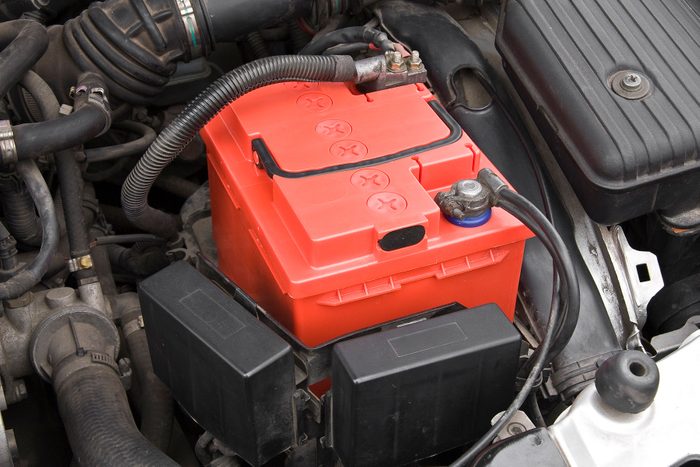
Clean the Cables
First, clean the top of the battery and any corrosion from the cables with a tablespoon of baking soda, a cup of water and a non-metallic brush. Flush with cool water. Then disconnect the cables, starting with the negative one to prevent your wrenches from arcing on a nearby ground.
Loosen the battery cable clamp bolts and gently give them a twist. Use a cable puller if they’re stuck. Never pry on the auto battery posts. If you have a side post terminal (not shown), use a 5/16-inch box wrench to loosen the cables. With the cables removed, further clean off the corrosion around the auto battery terminals and cables with a post cleaner.

Check the Level of the Electrolyte
Gently pry off the covers of the battery cells. The water and acid mixture in the battery (electrolyte) should be about 1/2-inch deep or to the bottom of the fill hole.
If you need to add water to the car battery, use clean distilled water, being careful not to overfill the cells, then inspect the battery case for cracks. If you find a crack, replace the battery. If you add battery fluid, let the water mix with the electrolyte for a few hours before checking the condition and charge of the battery. Here’s what you need to know about battery insulation.

Check the Battery Inspection Window
If you have a no-maintenance battery, check to see if you there’s a green dot in the sight glass/charge indicator. Green means the car battery is good. If it’s dark, it needs recharging. If it’s yellow or has no color at all (inspect carefully and use a flashlight), replace the battery.
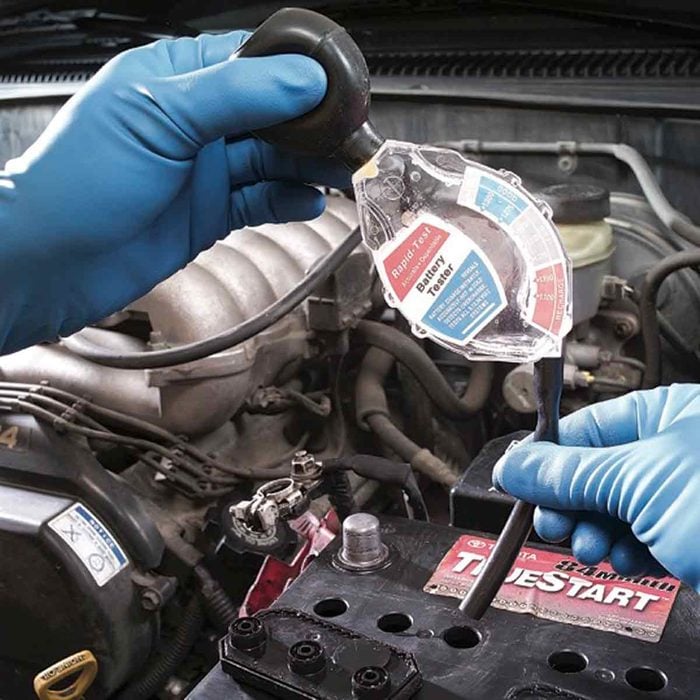
Check the Condition and Charge of the Battery
If you have a deep cell battery, test the electrolyte in each cell. Squeeze the ball on the hydrometer and draw the solution into the tester. Carefully hold the tester level and write down the reading. Squirt the solution back into the same cell.
The testers are calibrated assuming a battery is at 80 degrees. Add .04 to each reading for every 10 degrees above 80 and subtract .04 for every 10 degrees below. If you get a cell reading that differs from the others by .05 or more, replace the battery. A fully charged battery should have a reading of 1.265 or higher.
If all the readings show fair or low (1.200 is low) but are consistent, charge the battery.
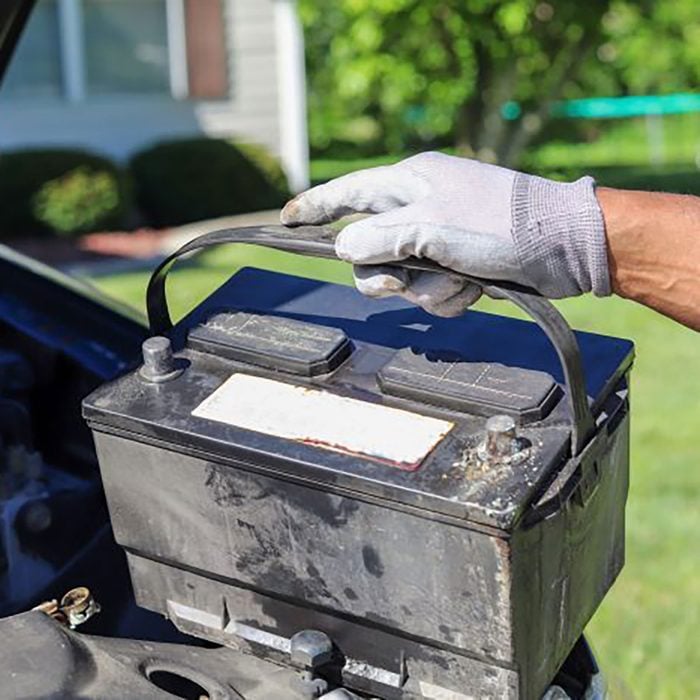
Check the Battery Tray
Start by taking off your battery hold-down clamp. Disconnect the car battery, starting with the negative cable, then the positive. Use the handle or tie a heavy-duty strap to the ears on the side of the battery and gently lift it out. Be careful; battery acid is dangerous. Don’t drop it.
Once the battery is out, clean the battery tray it sits on and replace it if it’s badly corroded. Batteries are heavy and need solid support. Remember to always wear eye protection and gloves when working on batteries, and never smoke around them!
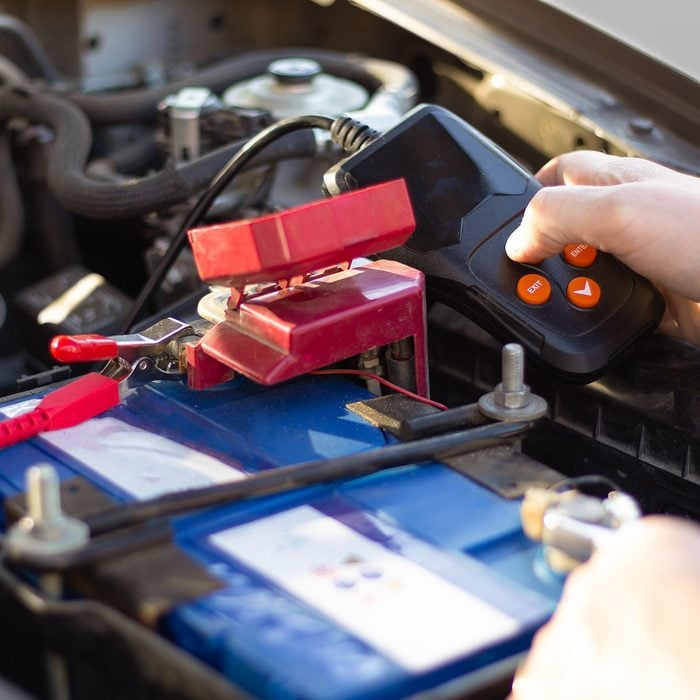
Use a Battery Maintainer
Batteries lose their charge when they sit idle. When that happens, you could wind up with a worthless battery after prolonged storage.
To keep batteries healthy, they should be charged every six weeks. But leaving a standard battery charger connected for the whole season isn’t a good idea — that will overcharge the battery and shorten its life. Instead, invest in a battery maintainer which monitors battery voltage and automatically adjust the charge to avoid under- and over-charging it.
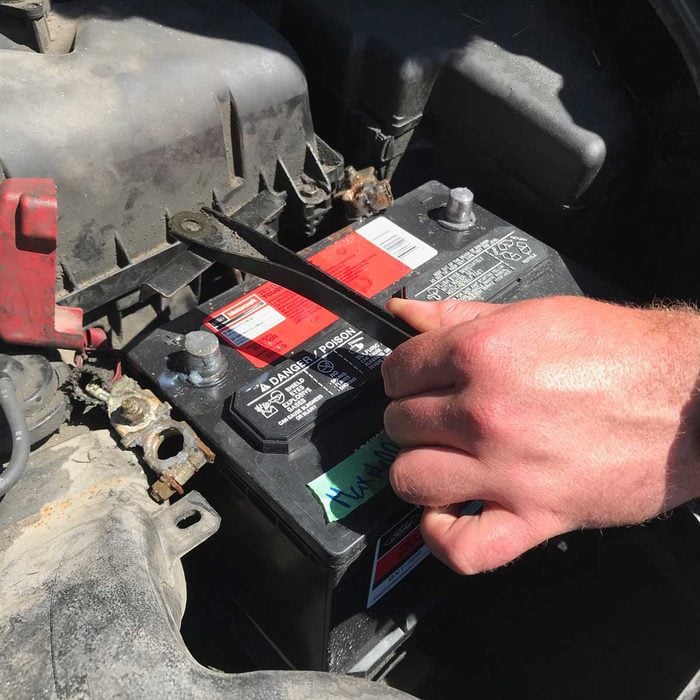
Connect a New Battery
Carefully lift the new battery into place. Connect the hold-down clamp, then connect the cable to the positive terminal first and the negative last (for negative ground systems). Smear a little petroleum jelly onto the terminal before fastening the cable clamps to the posts. The grease will help slow corrosion.
Most batteries are at least 75 percent charged when you buy them and should be ready for you to start your car and drive. Check with your supplier to see if your new battery needs charging before you use it. Always replace the car battery with one with a higher rating than the original.
